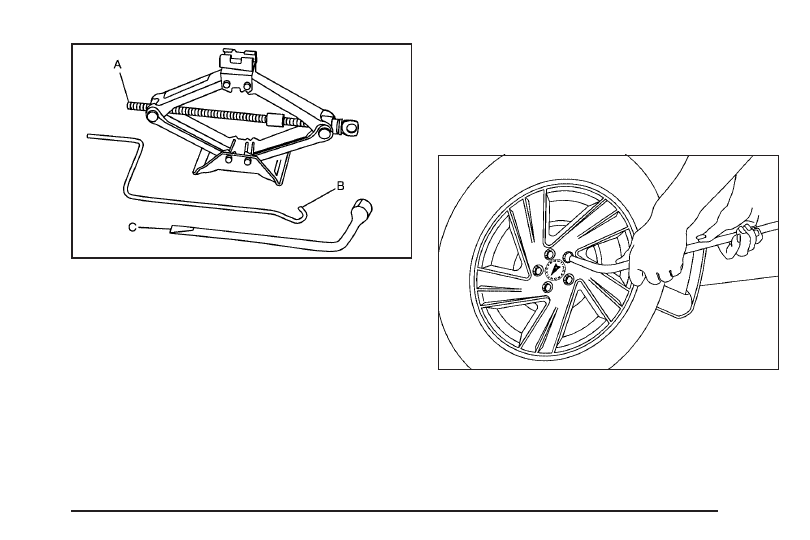Pontiac Vibe (2006 year). Manual - part 20

The tools you will be using include the jack (A), jack
handle (B) and wheel wrench (C).
Removing the Flat Tire and
Installing the Spare Tire
1. Attach the jack handle to the jack.
2. Turn the jack handle clockwise to raise the lift head
a little.
3. Using the wheel wrench, loosen all the wheel nuts.
Do not remove them yet.
5-73